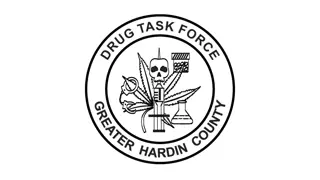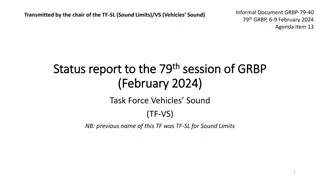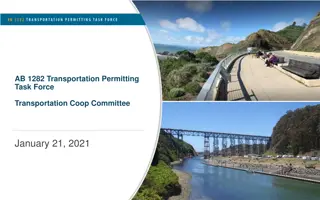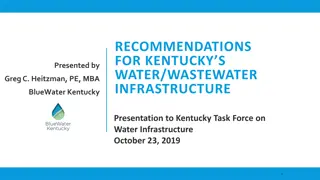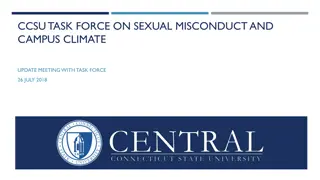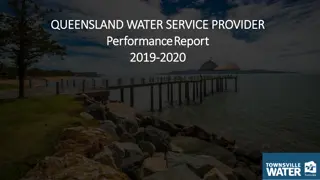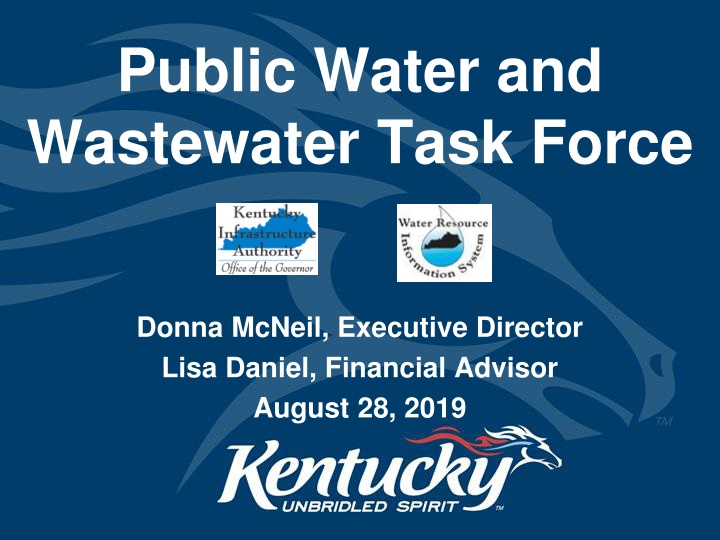
Funding Sources and Options for Public Water Systems
Explore various grants and loans available for public water systems, including funding sources like Kentucky Infrastructure Authority and USDA Rural Development. Discover opportunities for financial assistance for water projects and infrastructure development in Kentucky.
Download Presentation

Please find below an Image/Link to download the presentation.
The content on the website is provided AS IS for your information and personal use only. It may not be sold, licensed, or shared on other websites without obtaining consent from the author. If you encounter any issues during the download, it is possible that the publisher has removed the file from their server.
You are allowed to download the files provided on this website for personal or commercial use, subject to the condition that they are used lawfully. All files are the property of their respective owners.
The content on the website is provided AS IS for your information and personal use only. It may not be sold, licensed, or shared on other websites without obtaining consent from the author.
E N D
Presentation Transcript
Public Water and Wastewater Task Force Water Resource Information System Donna McNeil, Executive Director Lisa Daniel, Financial Advisor August 28, 2019
Overview Funding Sources & Availability for Utilities Other Funding Options Items for Consideration
Funding Sources - Grants Kentucky Infrastructure Authority Small and Disadvantaged Community Water Systems ($698,000) Kentucky Department of Local Government Appalachian Regional Commission Area Development ($4,958,537) Central Appalachia Distressed Counties Infrastructure ($14,498,739) Distressed Counties ($9,457,940) Community Development Block Grants ($7,732,782)
Funding Sources - Grants Energy and Environment Cabinet Abandoned Mine Lands AML Waterline Grant ($3,500,000) AML Pilot Waterline and Treatment ($2,000,000) Clean Water Act Section 319 (Non-Point Source) ($1,571,731) Brownfields(varies from $200,000 up to $1,000,000 per project)
Funding Sources - Grants USEPA Brownfields (varies) https://www.epa.gov/brownfields/types-brownfields- grant-funding Kentucky Economic Development Cabinet Kentucky Department of Transportation US Army Corps of Engineers Section 595 Delta Regional Authority
Funding Sources - Loans Kentucky Infrastructure Authority USDA/Rural Development USEPA Water Infrastructure Finance and Innovation Brownfields National Rural Water Association Rural Community Assistance Partnership Kentucky Association of Counties
Funding Sources-Both USDA/Rural Development WEP Loan & Grant Funds Obligated FY 2015 - 2019 Loan Grant $70,000,000 $58,853,000 $60,000,000 $47,805,000 $50,000,000 $38,322,000 $40,000,000 $32,838,790 $31,900,000 $30,000,000 $15,983,665 $20,000,000 $11,282,250 $12,470,000 $10,150,000 $9,609,000 $10,000,000 $0 2015 2016 2017 2018 2019
KIA Mandates 1. Provide assistance for water services Administer Federal Clean Water & Drinking Water loan programs (MOA with EEC) 2. Maintain Water Resources Information System (WRIS) 3. Gather water resource data for development and management 4. Promulgate regulations related to potential borrowers financial, managerial, and technical information
About KIA (January 1, 2019) $1.4 billion in assets Administering 34 state grants Over 600 active loans 4 programs 2 State, 2 Federal 239 borrowers KIA Website: http://kia.ky.gov/
KIA Funding Sources Clean Water State Revolving Fund (CWSRF) & Drinking Water State Revolving Fund (DWSRF) Capitalization grant from USEPA Requires 20% state match (general funds) Availability includes loan repayments (principal and interest) Infrastructure State Revolving Program (Fund B) & Governmental Agencies Program (Fund C) Availability includes loan repayments (principal and interest)
KIA Funding Availability FY2019 CWSRF - $72 million DWSRF - $50 million Fund B - $5 million Fund C - $2 million Total - $129 million FY2020 $75 million $52.5 million $5 million $2 million $134.5 million WRIS Funding Needs = $4.97 Billion $2.28 billion drinking water $2.69 billion wastewater
Items to Consider Loan program to improve financial, managerial, and/or technical capacity of utility. Utility must implement best management practices Utility receives principal forgiveness, IF specific metrics are met showing improvement Examples: reduction of water loss, consolidation or merger with another utility, or financial controls to safeguard against theft
Items to Consider KIA funding workgroup Facilitate better communication: funding agencies and regulators Develop website to link with other funding sites Automatic rate adjustment clause annually Consumer Price Index (CPI) based Periodic rate studies (every 5 years) to confirm adequate rates
Items to Consider Mandate training for all water utility decision- makers Based on best management practices Maintain a replacement reserve account Required by most funding agencies until loans repaid
Items to Consider Encourage regionalization & consolidation One management team with separate systems Consolidate or merger of physical facilities Merger of separate systems Consolidate purchase contracts or services Examples: Tank inspections, purchasing treatment plant chemicals
KIA creates more project funds, less interest expense Using KIA creates more project funds, less interest expense issued by Kentucky municipalities for water and wastewater infrastructure projects away from KIA If these municipalities had borrowed through the State Revolving Funds, approximately $1 Billion of additional project funds would be available for project costs. Low cost funding provided by KIA allows more dollars to be used for projects funds rather than interest expense. Consider, during the last 10 years, $4.8B of municipal bonds* were
Other State Water Infrastructure Initiatives Other State Water Infrastructure Initiatives resources for additional projects. New Jersey - Water Infrastructure Savings Enabling ( WISE ) Act NJEIFP financing is a cost-effective solution that not only facilitates more sustainable user rates, but also optimizes capital budgets by reducing annual loan repayments thus freeing up enhance transparency ensure local government units consider the NJEIFP Applies to projects of $1 million or greater Pursuant to the WISE Act, authorities and other local units seeking Local Finance Board ( Board ) approval to finance such projects shall include an EIT Financial Cost Estimate ( Cost Estimate ) with their Board applications. The Cost Estimate, obtained via EIT s WISE Calculator, compares the cost for financing environmental infrastructure projects through an independent bond issuance versus the NJEIFP.
More Capacity for Water Infrastructure KIA can leverage existing loan pool to provide immediate funding KIA can further leverage existing loan pool to provide immediate funding Leveraging increases the current capacity to loan money and accelerate projects through the issuance of debt Debt is solely secured by the borrower repayments and other assets of the state revolving fund No additional state funds are pledged and the debt is not considered an obligation of the state KIA can leverage to raise funds through the municipal bond market in the near term to meet clean water and drinking water infrastructure demands.
Leveraging Example Leveraging Example Grants ($120) Federal and State Bonds ($98, 4.0%, 20yr) $220M Loans ($218, 2.0%, 20yr) $222.36 Recycle Grant Money to make more Loans over Time Bond Debt Service $101.98 1.85:1 Loan to Grant Recycled Grants $120.44
Other State Water Infrastructure Initiatives Indiana HB 1406: Water infrastructure assistance fund and program. Provides that money from certain sources in the water infrastructure assistance fund (fund) is continuously appropriated for the purposes of the law concerning the water infrastructure assistance program. $20 million annual loan and financial assistance program to help communities replace things like aging pipes. To be eligible for financial help, cities must try to collaborate with other towns on projects and create a plan for how they ll use the dollars. Forty percent of the fund would go to help small water utilities that can't often pay for these expensive improvements on their own. Provides that a participant, to receive a loan, grant, or other financial assistance from the fund: (1) must have an asset management program North Carolina The Division of Water Infrastructure and the North Carolina DEQ: North Carolina s Statewide Water and Wastewater Infrastructure Master Plan: The Road to Viability (the Master Plan). This plan addresses water and wastewater infrastructure needs and ways to implement best management practices in the following three areas: Infrastructure Management, Organizational Management and Financial Management. https://files.nc.gov/ncdeq/WI/Division/Statewide_Water_and_Wastewater_Infrastructure_Master_Plan_2017.pdf
QUESTIONS? Donna McNeil, Executive Director Kentucky Infrastructure Authority Donna.McNeil@ky.gov 502-892-3496 (direct line) KIA Website: http://kia.ky.gov/ Financial Advisor: Lisa Daniel daniell@pfm.com



